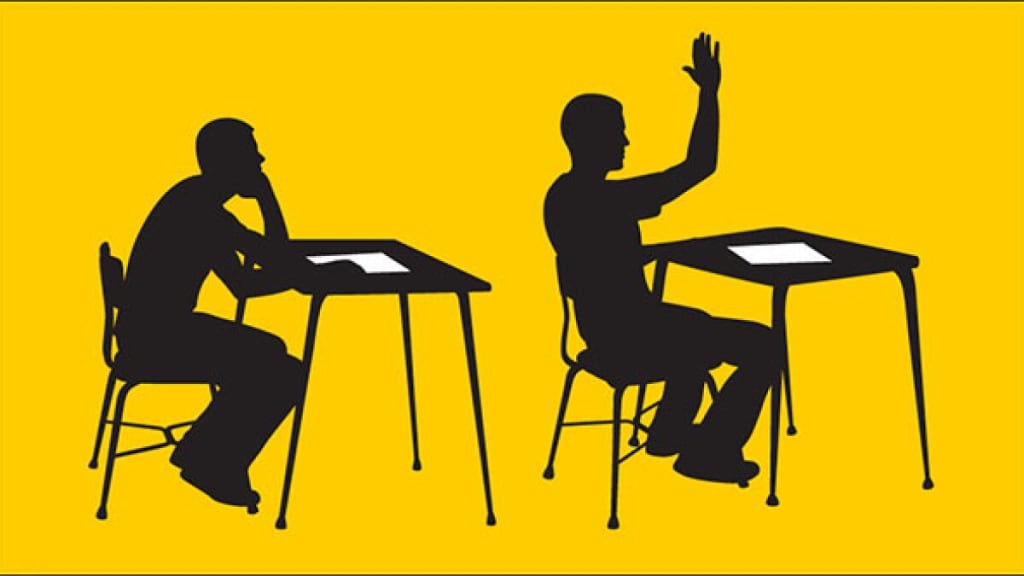
Exordium...
In every classroom, there are students who prefer to listen rather than actively participate in discussions. While this quietness may be perceived as a lack of engagement, it is crucial for teachers to recognize the value and potential of these students. Unfortunately, there are instances where educators unconsciously neglect the presence of these quiet students, inadvertently hindering their growth and learning experience. In this blog, we aim to explore the reasons behind teacher unconsciousness, its impact on students, and strategies to create an inclusive and supportive learning environment.
Understanding the Dynamics
The dynamics of a classroom can be complex, with various factors influencing the behavior and participation of students. Teachers often tend to gravitate towards students who are more vocal and active in class discussions. They may assume that these students are more interested and engaged in the subject matter, inadvertently overlooking the potential of their quieter peers. This unconscious bias can stem from a desire to maintain an interactive and dynamic learning environment, but it often leads to the neglect of those who choose to remain silent.
Impact on Students
Teacher unconsciousness towards quiet students can have far-reaching consequences. These students may feel marginalized, invisible, or ignored, which can significantly impact their self-esteem and confidence. They may become hesitant to ask questions or share their thoughts, hindering their intellectual and emotional growth. Moreover, neglecting the presence of these students can perpetuate a cycle of disengagement, as they may feel discouraged from actively participating in class activities. This unintentional exclusion denies them opportunities to develop their communication skills, critical thinking abilities, and overall academic progress.
Creating an Inclusive Learning Environment
To address teacher unconsciousness towards quiet students, it is crucial to create an inclusive learning environment that values and encourages all forms of participation. Here are some strategies that teachers can employ:
1. Embrace Different Communication Styles: Recognize that not all students express themselves verbally. Encourage alternative forms of participation, such as written responses, online discussions, or small group activities, that cater to diverse communication styles.
2. Build Individual Relationships: Take the time to get to know each student on a personal level. Understand their strengths, weaknesses, interests, and learning preferences. This will help you tailor your teaching methods and provide support to those who may be more reserved in class.
3. Encourage Active Listening: Promote active listening skills by incorporating activities that require students to reflect on their peers' ideas and perspectives. This fosters a sense of respect and creates an environment where all voices are valued.
4. Establish a Safe and Supportive Classroom Culture: Emphasize the importance of mutual respect and create a safe space where students feel comfortable expressing themselves. Encourage students to share their thoughts without fear of judgment or criticism.
5. Provide Multiple Avenues for Participation: Offer a variety of opportunities for students to engage with the material, such as written assignments, projects, presentations, or group work. This allows quieter students to showcase their understanding and contribute meaningfully.
6. Individualized Feedback and Support: Provide constructive feedback to students, focusing on their individual progress and growth. Offer encouragement and guidance to help them build confidence and gradually increase their participation levels.
7. Collaborative Learning Opportunities: Encourage collaborative learning experiences that promote peer-to-peer interactions. This can help quieter students develop confidence in expressing their ideas and perspectives within a supportive group setting.
Creating an inclusive classroom environment that values and supports the participation of all students is essential for their holistic development. Teacher unconsciousness towards quiet students can hinder their growth and learning potential. By recognizing the diverse communication styles and implementing strategies that encourage participation in various forms, teachers can ensure that all students feel seen, heard, and valued. Embracing these practices will not only benefit the quiet students but also enrich the overall classroom experience, fostering a culture of inclusivity, respect, and active learning.
Continued Professional Development
To address teacher unconsciousness towards quiet students, ongoing professional development is crucial. Teachers should engage in workshops, seminars, and training sessions that focus on fostering an inclusive classroom environment. These opportunities can provide educators with strategies to better understand and support the needs of quieter students. Additionally, collaboration with colleagues and sharing best practices can contribute to a collective effort in creating a more inclusive educational experience for all students.
Promoting Student Self-Advocacy
Empowering students to advocate for themselves is another essential aspect of addressing teacher unconsciousness. Educators can encourage quiet students to express their needs, concerns, and ideas. This can be achieved through regular one-on-one check-ins, where students are given the opportunity to share their thoughts and ask questions in a safe and supportive environment. By fostering self-advocacy skills, students gain the confidence to assert themselves, ensuring that their voices are heard.
Parent and Guardian Collaboration
Collaboration with parents and guardians is key in addressing teacher unconsciousness towards quiet students. Open lines of communication can help educators gain insights into a student's personality, learning style, and any challenges they may be facing. Sharing strategies that support the student's engagement and participation at home and in the classroom can create a holistic support system.
Continuous Reflection and Self-Awareness
Teachers should regularly reflect on their own teaching practices and biases to ensure they are not unconsciously neglecting any students. Engaging in self-reflection, seeking feedback from colleagues and students, and being open to constructive criticism are essential steps in becoming more aware of one's own biases and working towards creating an inclusive learning environment.
Retrospect
Addressing teacher unconsciousness towards quiet students is a critical step towards fostering an inclusive classroom where all students feel valued and supported. By embracing different communication styles, building relationships, encouraging active listening, establishing a safe and supportive classroom culture, and providing multiple avenues for participation, teachers can create an environment where the voices of quieter students are heard and appreciated. Continued professional development, promoting student self-advocacy, collaborating with parents and guardians, and engaging in self-reflection contribute to the ongoing growth and improvement of educators. By making a conscious effort to recognize and address unconscious biases, teachers can nurture the potential of all students and create a truly inclusive educational experience.






Comments (1)
Good